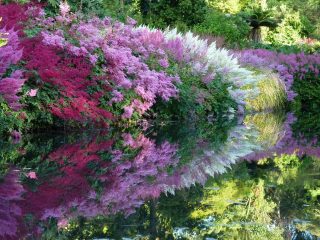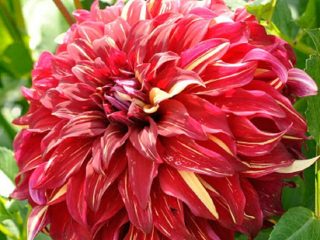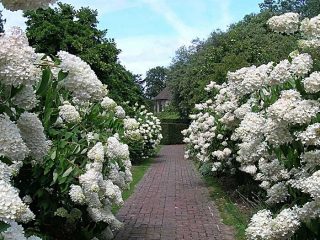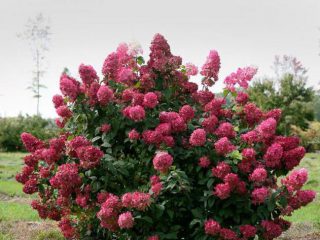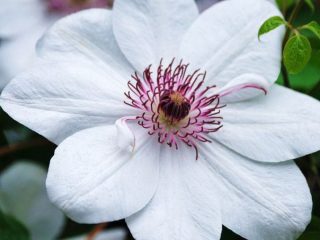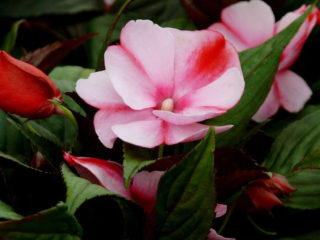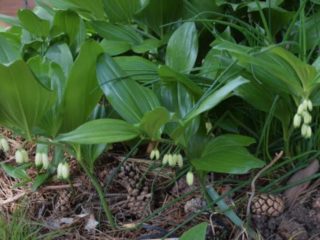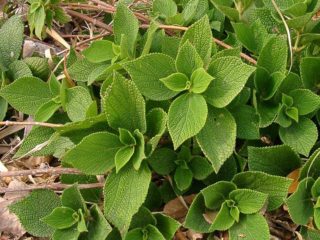Content
Lily Elodie is a variety of Asian origin used in landscape design. The plant does not require careful care, which is why it has found application on the plots of gardeners in different countries.
History of selection

Thanks to her high immunity, Lilia Elodie is not afraid of fusarium
The lily appeared in the largest nursery “Marklily” in 2003. A. Peterson became the breeder. Elodie is not included in the Russian State Register because it is an Asian crop. It gained popularity relatively recently.
Description of Elodie lily with photo
The plant is unpretentious and has high frost resistance. It can grow in any, except the northernmost, region of Russia. The bulbs tolerate temperatures down to -35 °C and are not afraid of precipitation.
The height of the variety is not as large as that of other representatives of the genus - about 45 cm. In a favorable climate it grows up to 1-1.4 m. The leaves are distributed throughout the stem and are densely arranged. Veins are clearly visible on their surface. Lily does not lose its beauty for a month after flowering.
Elodie is suitable for breeding in temperate regions. In hot conditions, growth rates decrease. With constant contact with the sun's rays, the immune system will gradually weaken. This can lead to illness. In the scorching sun, lilies require regular watering. The same goes for sandy soil. If this is not taken into account, the buds will wither in a short time. The most favorable soils are slightly acidic.
Features of flowering
The variety begins to bloom in early, mid-June. With moderate watering, the period can last up to a month, pleasing the eye and filling the garden with a pleasant aroma. On average, up to 8-9 buds are formed on a peduncle. They are large in size (15 cm for an adult lily) and look towards the sky.

Lily Elodie is a hybrid, which some gardeners forget
The lower buds are located at an angle. Like the top ones, they consist of four petals. The shape resembles a crown, the outer edge is slightly tucked. The heterogeneity of the shade became the reason for the spread of the variety. Elodie can be recognized by its pale pink flower, which becomes darker towards the middle. The edges are white.
In the first year, the lily rarely shows itself. It gains beauty over time, so the results will only be visible in the second year of life. The young plant is distinguished by its small bud diameter and the presence of a small fluff.
Elodie prefers partial shade, ideal for planting under the canopy of trees. The more favorable the conditions, the longer the flowering will be. The owner will need to mulch, regularly water the crop and remember to apply fertilizer.
At first glance, the plant is very pleasant, but if you look closely at the stamens, they resemble the fangs of a predator. Some people may not like this image, but this makes the lily, on the contrary, more unusual - tender on the outside, but dangerous on the inside.

Gardeners call Elodie “toothy”
Advantages and disadvantages
Lily has interesting decorative properties, which is why it becomes an object of admiration not only in Asia, but also in Europe.

The most dangerous pest for the Elodie lily is the sand beetle.
Pros:
- a large number of buds - up to nine are formed on one peduncle;
- rapid growth - lilies have very high rates of development;
- subtle aroma - the smell is not always easy to detect;
- frost resistance - withstands winter without constructing a shelter (the exception is the northern regions);
- unpretentiousness - gets along in both poor and fertile soil.
Minuses:
- does not tolerate heat and ultraviolet radiation well.
Landing rules
Experts recommend planting the crop in early autumn. In a few months, the root system will have time to strengthen to survive the coming winter. With the onset of spring warmth, sprouts begin to form on the tubers. This happens in April, when the snow has not yet completely disappeared.

To protect corms from diseases, Elodie lilies are treated with Thunder
The variety should not be placed in wet soil. Even if he sprouts before winter, the tubers will still die. Before planting, you need to carefully dig up the soil, remove debris (roots, stones, bricks) and prepare a hole for the lily. A mixture of humus or compost is added to it.To protect against fungi, tubers are treated with a fungicide-based composition. The bulbs are deepened into the soil by 3 cm, or by 10-15 cm when using a sand cushion.
Care instructions
As soon as the lily has sprouted, gardeners proceed as follows:
- periodically feed Elodie; you can use both mineral and organic fertilizers;
- update the mulch from time to time;
- water the soil abundantly (there is no need to irrigate the leaves);
- Weed the area when small shoots appear.
After flowering stops, watering is reduced and flower stalks are cut off. Dry leaves and stems are carefully removed, being careful not to damage the flower. Potassium supplements must be taken during this period. In winter, Elodie lily does not require shelter. During heavy rains it is covered with film.
Reproduction methods
The plant can be propagated in the following ways:
- using bulbs located at the bottom of the stem;
- bulbs located in the upper layers of the soil;
- scales from bulbs.
Reproduction is usually done in the fall. The latter method is most often practiced. To do this, the scale is carefully separated from the mother bulb and placed in a hole, adhering to the planting rules.

Lily Elodie is resistant to gray rot, but only suffers from it under stress
Advice! Stem bulbs fall off on their own. The gardener only needs to understand what kind of bush they have formed and separate it.
Conclusion
Lily Elodie is an unpretentious plant that can be recognized by the pleasant soft pink shade of its petals. Due to its decorative qualities, the variety is used in landscape design. The culture is combined with small trees and annuals. Lilies can also be placed in flowerpots for growing on the balcony.
Reviews of the Elodie lily variety
